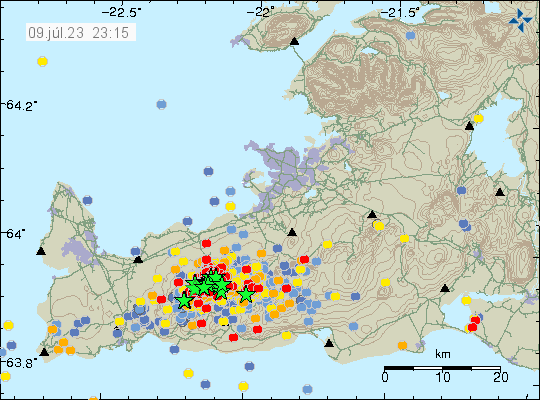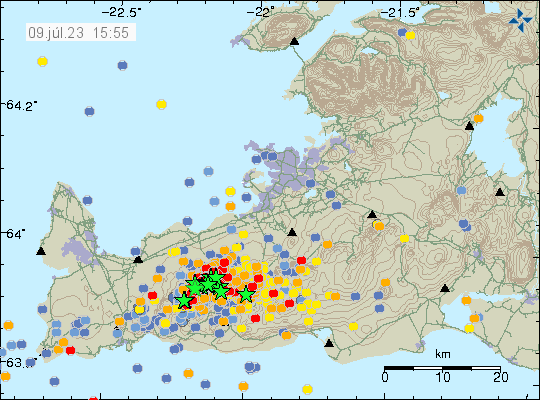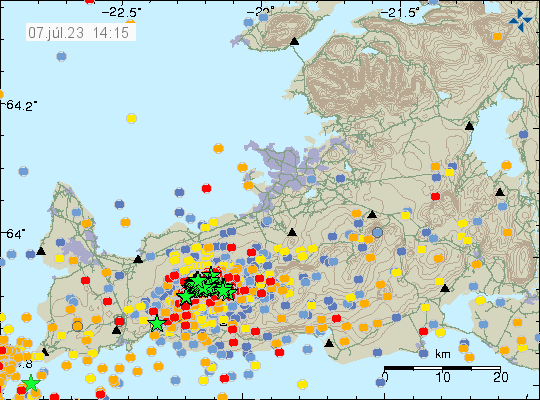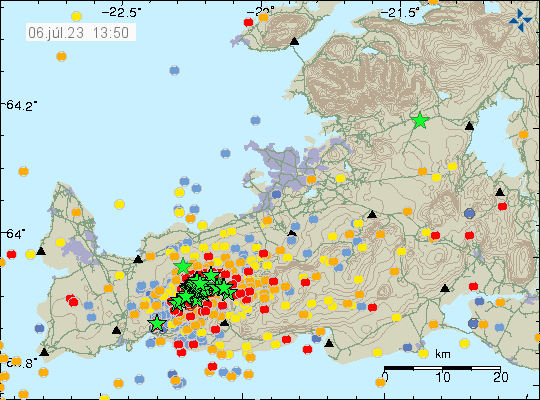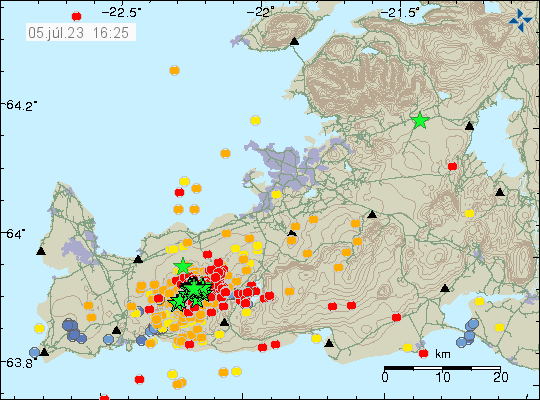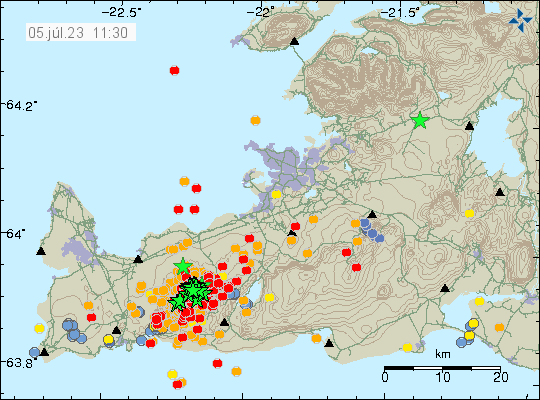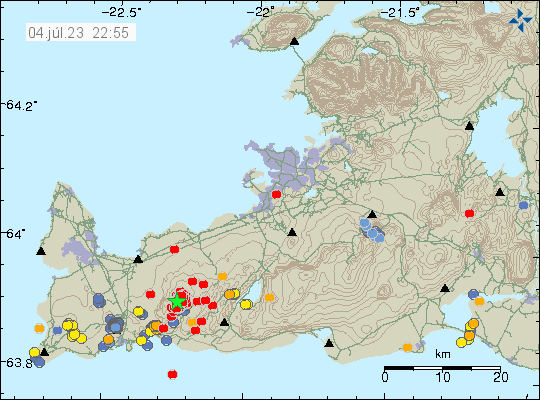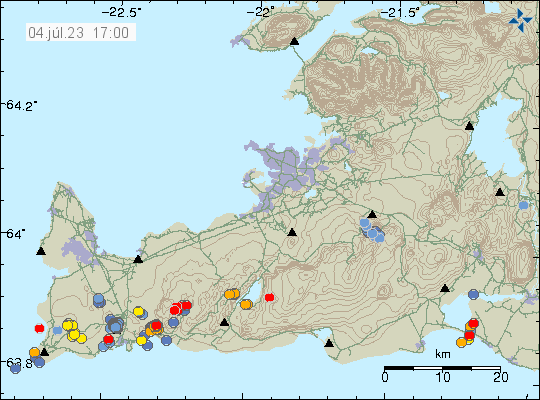Rúv News and Earth Science at University of Iceland is reporting that the eruption in Fagradalsfjall at Litli-Hrútur might end in one or two weeks time. This is based on how much the lava flow from the crater is currently decreasing. This would also be mostly in line with the eruption in Meradalir valley in 2021, that lasted for two weeks. This eruption has been slightly longer than that eruption, since it has been slightly larger in volume of magma erupting.
Icelandic reporting on this
Eru goslok handan við hornið? (Rúv.is, Icelandic)
Facebook post reporting on the details of the eruption for 29. July 2023 (Facebook, Icelandic, Possible English)

